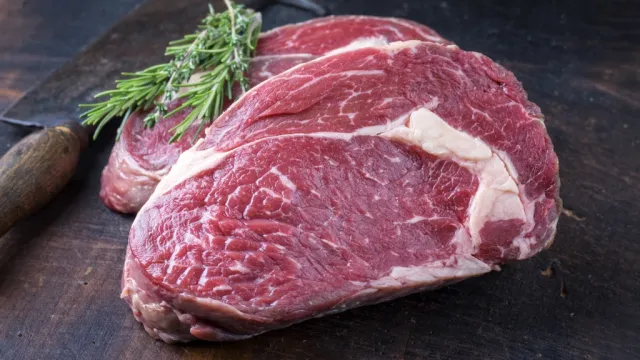This Is the Safest Way to Store Meat

Lean proteins are a great way to make every meal healthier and more filling. In fact, research published in the International Journal of Obesity suggests that a high-protein diet may be effective at combatting the effects of obesity. However, despite the potential health benefits of a high-protein diet, improperly-stored meat can pose a serious health risk.
Meat can be a breeding ground for bacteria like salmonella and E. coli, which can cause serious, even life-threatening illnesses. In fact, the Center for Disease Control estimates that 48 million people contract foodborne illnesses in the U.S. alone each year. That’s a rate of about 1 in 6 people. And improper storage of meat can cross-contaminate other foods, as well.
Fortunately, the rules for safely storing meat are pretty simple. The bad news? Odds are you’re breaking more than a few of them right now. The process of safely storing meat begins before you even bring it home. Before purchasing meat, make sure that it isn’t past its sell-by or expiration date. Equally important is ensuring that its packaging isn’t torn or punctured, which can lead to leaks in the fridge. If you’re buying meat, make sure it gets into your refrigerator within two hours of purchase. And if it’s above 90 degrees out, you should have those steaks chilling at home within an hour, according to the USDA.
Once your groceries are home, poultry and ground meats should be cooked or frozen within one to two days. Other meats, like beef, lamb, lunch meat, and pork, should be eaten within three to five days. Bacon is good for seven days in the fridge, if it somehow manages to go uneaten until then.
But eating your food in a timely manner won’t do much good if your fridge isn’t properly set. Your refrigerator should be operating at or below 40 degrees Fahrenheit, but above freezing. Your freezer should be at 0 degrees. Consider keeping a thermometer in the fridge to monitor the temperature so you can make sure it’s functioning within this zone. And if you lose power, try to open your refrigerator and freezer as little as possible.
You should also clean your refrigerator regularly and clean up any spills or leakages from meats immediately. The safest way to thaw frozen meat is in the fridge; keep a dish or tray underneath it to catch any juices. Still, a good rule of thumb is to store meat on the bottom shelf of your refrigerator. This way, if it does leak, it won’t drip down onto the food below it, creating a bigger mess and increasing the risk of cross-contamination.
A final good rule of thumb is “when in doubt, throw it out.” If food has been sitting in the fridge for longer than the above recommended guidelines or you’re not sure how long it’s been there, toss it. Even if your meat doesn’t look or smell strange, it could still be harboring dangerous bacteria. When it comes to your health, it’s always better to be safe than sorry. And when you want to turn everything you cook into brain food, start by adding the 40 Best Foods for Your Brain to your menu!
To discover more amazing secrets about living your best life, click here to sign up for our FREE daily newsletter!